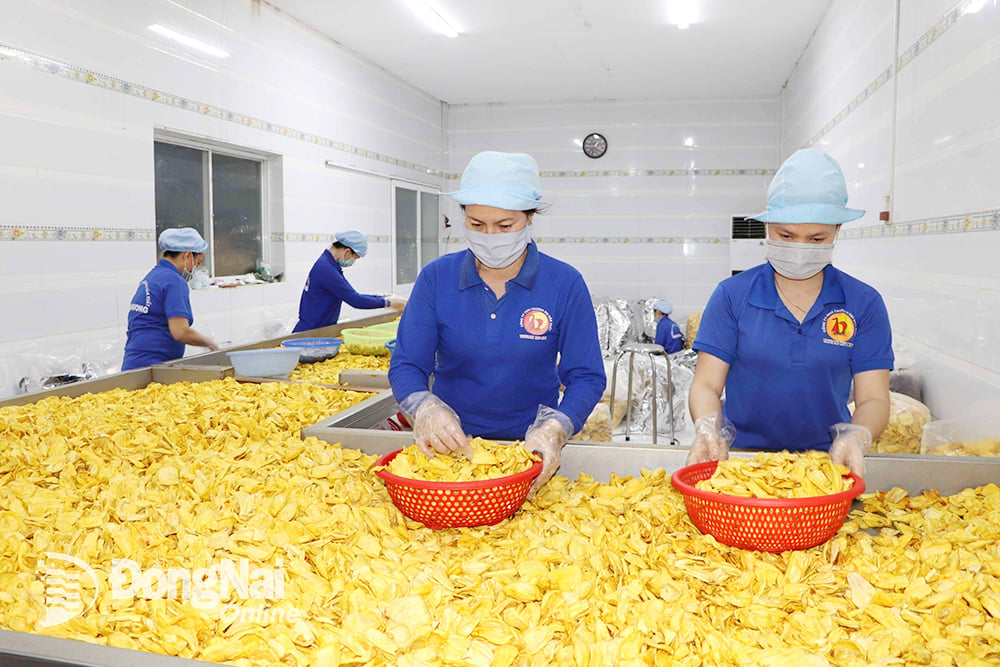 |
| Processing fresh fruit at a business in Dinh Quan district. Photo: B.Nguyen |
Located in a dynamic economic development region, the Southeast is also among the top in the country in terms of growing area codes, attracting businesses to invest in export packaging and deep processing factories, contributing to the development of Vietnam's fruit industry.
Rapidly increase the area of high-value fruit trees
By the end of 2024, the total fruit tree area of the Southeast region is 142.2 thousand hectares, ranking 4th in terms of area among regions in the country. According to the Project on Developing Key Fruit Trees to 2025 and 2030 of the Ministry of Agriculture and Environment, the country has 14 key crops including: dragon fruit, mango, banana, lychee, longan, orange, grapefruit, pineapple, rambutan, durian, jackfruit, passion fruit, avocado... These are also fruits with many strengths for development in the Southeast region such as: mango (concentrated in Dong Nai, Tay Ninh); rambutan, banana (Dong Nai); longan (Tay Ninh, Ba Ria - Vung Tau); jackfruit (Dong Nai, Binh Phuoc, Tay Ninh); durian (Dong Nai, Binh Phuoc).
Many types of specialty trees and export fruits have high economic value such as: Hoa Loc mango, Thai mango, Dona durian, green-skin grapefruit... Specifically, fruit trees with export advantages all have large areas such as: durian with an area of 25.4 thousand hectares; tissue culture banana with an area of 23.5 thousand hectares; mango with an area of 15.4 thousand hectares...
Dong Nai is a province with a large fruit growing area in the Southeast region with a total area of nearly 81.8 thousand hectares, an increase of thousands of hectares compared to 2020. Some of these crops are among the top in the country. Currently, Dong Nai's total tissue culture banana growing area is the largest in the country with a total area of nearly 16.7 thousand hectares, with an output of more than 186.7 thousand tons. The durian growing area is more than 12.6 thousand hectares, nearly double that of a few years ago.
Implementing the restructuring policy, the agricultural sector in the Southeast region has achieved many important achievements, maintaining high growth rates. In particular, fruit trees have not only increased rapidly in area and productivity, but output has also increased continuously thanks to the application of scientific and technical advances, increased investment in intensive farming, and the selection and use of new varieties.
Provinces and cities in the Southeast region focus on developing large-scale specialized areas, applying high technology and techniques to production to meet export market standards. Localities are very interested in supporting mechanisms and policies to expand the area granted export growing area codes to increase the competitive advantage of the region's key fruit trees. Thanks to that, the fruit sector has formed effective linkage chains, exporting to many countries around the world, including many demanding markets such as the United States, Europe, Japan, Korea, etc.
Dong Nai is a pioneer in building a fresh fruit industry chain. Currently, the province has 844 cooperatives with the participation of nearly 31,700 members; the area participating in production linkage through cooperatives reaches nearly 23,400 hectares. Cooperatives are the focal point to support members in applying scientific and technical advances in production. Of these, 35 cooperatives have products certified by VietGAP with an area of over 908 hectares; 2 cooperatives are certified organic with an area of 4.3 hectares, 21 cooperatives are granted growing area codes for export with an area of over 654 hectares.
According to Deputy Director of the Department of Agriculture and Environment Tran Lam Sinh, the whole province has 275 linkage chains, an increase of 43 linkage chains compared to 2023 with the participation of 127 enterprises, 70 cooperatives, 39 cooperative groups and 15,300 households participating in the linkage chain. The proportion of the value of the province's key agricultural, forestry and fishery products consumed in the form of cooperation and linkage reached over 47.6%. The province is very interested in implementing policies to support linkages in production and consumption of agricultural products in the province such as: supporting consulting costs for linkage building; supporting infrastructure for linkage; supporting the construction of agricultural extension models; supporting 50% of the cost of purchasing seeds, equipment, and essential materials to build demonstration models; supporting training, coaching, and technical training; supporting vocational training; supporting seeds, materials, and product packaging design, etc.
Taking advantage of the many areas specializing in growing delicious specialty fruit trees, many provinces and cities in the Southeast region have strongly developed garden tourism and eco-tourism associated with areas of delicious specialty fruit. The region has many localities famous for garden tourism during the ripe fruit season such as: Long Khanh city (Dong Nai province), Lai Thieu (Binh Duong province)... This model contributes to increasing the economic value of areas specializing in growing fruit trees.
Attracting investment in processing
The Southeast is the economic locomotive of the country, strongly developing in industry and services and is also a hub for domestic and international trade. In particular, most agricultural and aquatic products of the Southern region are mainly gathered and exported through ports in Ho Chi Minh City.
Exploiting the above advantages, localities in the Southeast region have increased investment in synchronous technical infrastructure, technology transfer, reorganized production towards large-scale goods; formed cooperative relationships along the industry value chain, attracted facilities for purchasing, preserving, processing and exporting fresh and processed fruits. The goal is to reduce the pressure of seasonality on fresh fruits, and improve economic efficiency for this model.
Since the beginning of the year, Dong Nai authorities have continued to strengthen guidance for businesses and people to build codes for growing areas and packaging facilities to serve exports. Up to now, the whole province has 189 codes for growing areas with an area of over 27.9 hectares; 46 codes for domestic growing areas with 453 hectares; 86 codes for packaging facilities for export to markets such as the United States, China, Europe, Australia, New Zealand, etc. Activities to connect the consumption of agricultural products in the province have also received attention.
According to some enterprises investing in processing and packaging factories for bananas for export in the province, the position of fresh Vietnamese bananas in the international market is increasing. In particular, Dong Nai is the "capital" of growing tissue culture bananas for export in the country. Many localities in the province have formed specialized areas with large areas, which are favorable conditions to attract enterprises to invest in processing and packaging factories for export right in the growing areas.
Chairman of the Board of Directors of Luong Gia Food Technology Joint Stock Company (headquartered in Ho Chi Minh City) Ho Quoc Thai shared that the company has invested in 2 fruit processing factories in Dong Nai. The company chose to invest in Dong Nai because Dong Nai's geographical location is extremely favorable for production activities, especially Long Khanh land is a very good trading point, with highways connecting from the West and connecting with the Central and Central Highlands provinces... In addition, the very active support of the provincial and local authorities, relevant departments and branches of Dong Nai also creates motivation for the company to feel secure in its commitment.
Typical provinces and cities in the Southeast region such as Ho Chi Minh City, Dong Nai, Binh Duong, Ba Ria - Vung Tau, etc. are forming agricultural product supply and processing centers, and logistics chains dedicated to connecting agricultural product consumption. In particular, the Southeast localities have close cooperation in building and developing agricultural product consumption markets for the whole region.
Binh Nguyen
Source: https://baodongnai.com.vn/dong-nam-bo/202504/phat-trien-cac-vung-chuyen-canh-cay-an-trai-ben-vung-73e3efd/


![[Photo] General Secretary concludes visit to Azerbaijan, departs for visit to Russian Federation](https://vphoto.vietnam.vn/thumb/1200x675/vietnam/resource/IMAGE/2025/5/8/7a135ad280314b66917ad278ce0e26fa)
![[Photo] National Assembly Chairman Tran Thanh Man chairs the meeting of the Subcommittee on Documents of the First National Assembly Party Congress](https://vphoto.vietnam.vn/thumb/1200x675/vietnam/resource/IMAGE/2025/5/8/72b19a73d94a4affab411fd8c87f4f8d)
![[Photo] Prime Minister Pham Minh Chinh meets with the Policy Advisory Council on Private Economic Development](https://vphoto.vietnam.vn/thumb/1200x675/vietnam/resource/IMAGE/2025/5/8/387da60b85cc489ab2aed8442fc3b14a)
![[Photo] President Luong Cuong presents the decision to appoint Deputy Head of the Office of the President](https://vphoto.vietnam.vn/thumb/1200x675/vietnam/resource/IMAGE/2025/5/8/501f8ee192f3476ab9f7579c57b423ad)

![[Photo] General Secretary To Lam begins official visit to Russia and attends the 80th Anniversary of Victory over Fascism](https://vphoto.vietnam.vn/thumb/1200x675/vietnam/resource/IMAGE/2025/5/8/5d2566d7f67d4a1e9b88bc677831ec9d)
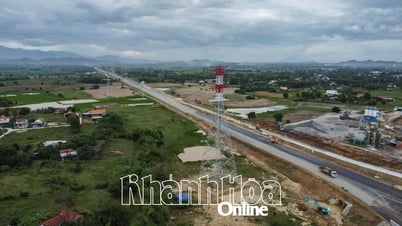


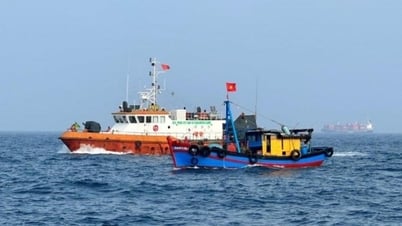

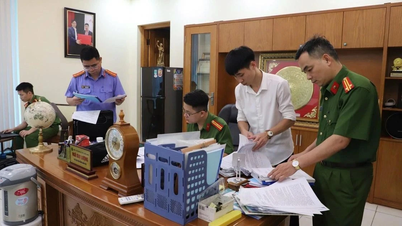




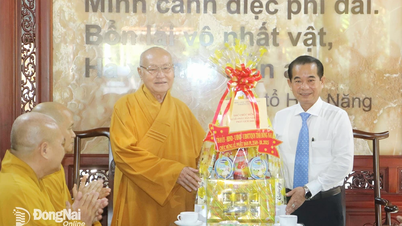
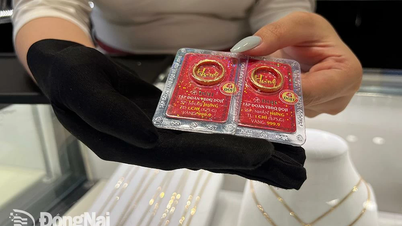
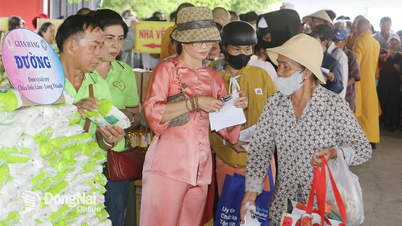
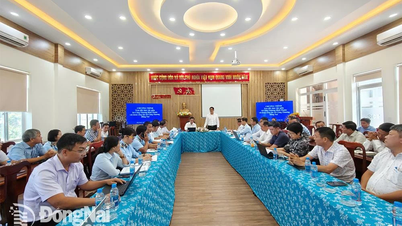
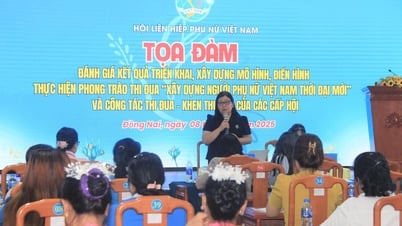
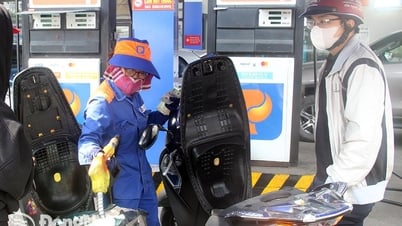

































![[Photo] Prime Minister Pham Minh Chinh talks on the phone with Singaporean Prime Minister Lawrence Wong](https://vphoto.vietnam.vn/thumb/402x226/vietnam/resource/IMAGE/2025/5/8/e2eab082d9bc4fc4a360b28fa0ab94de)











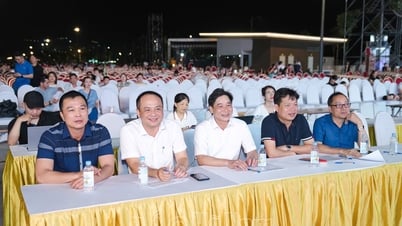

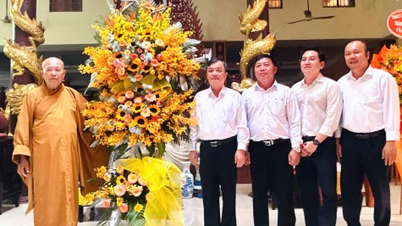














Comment (0)